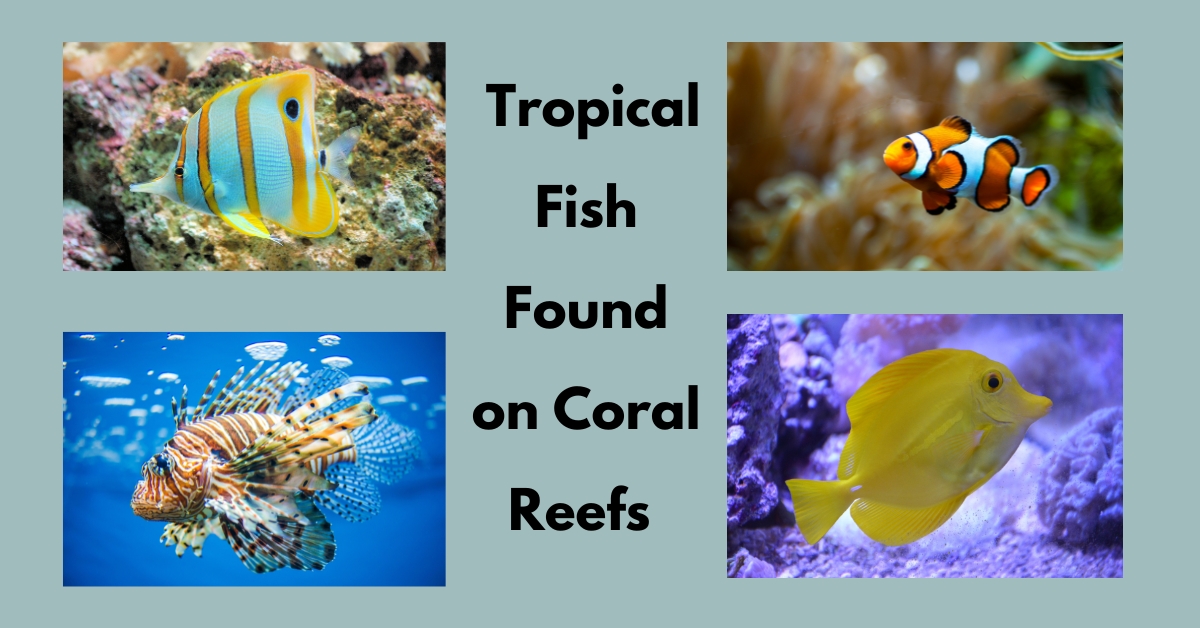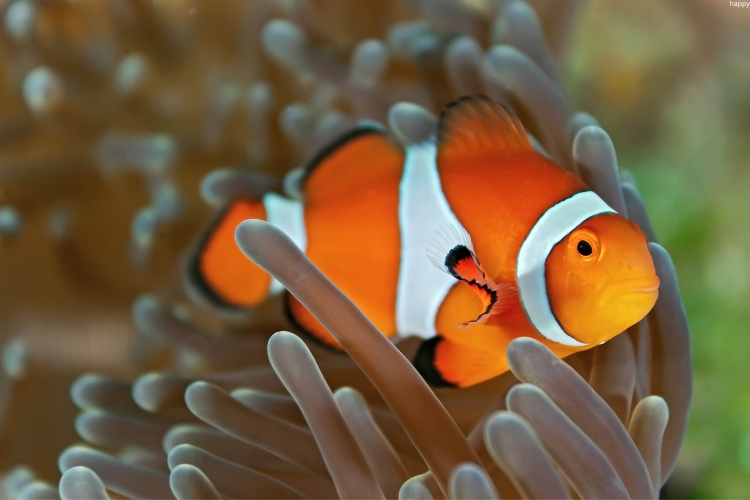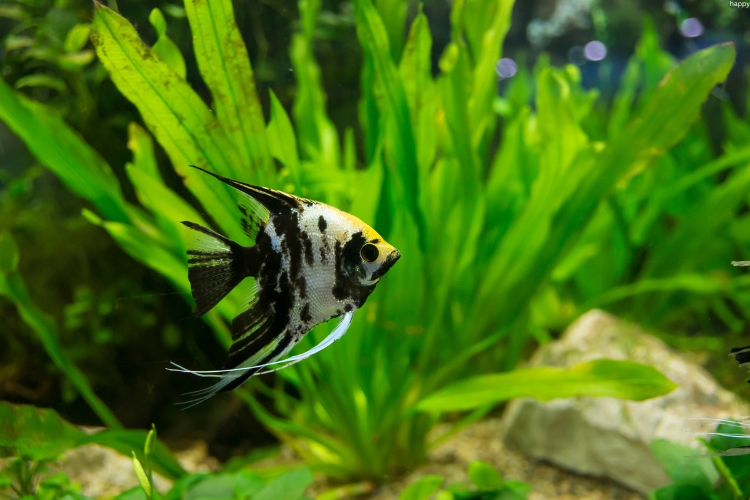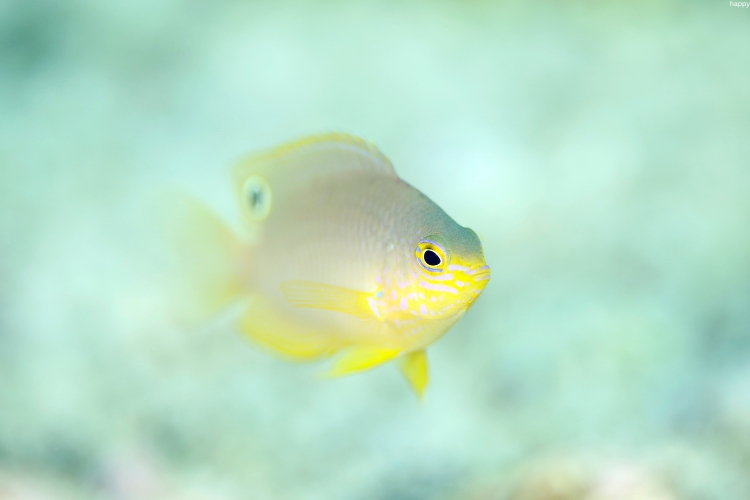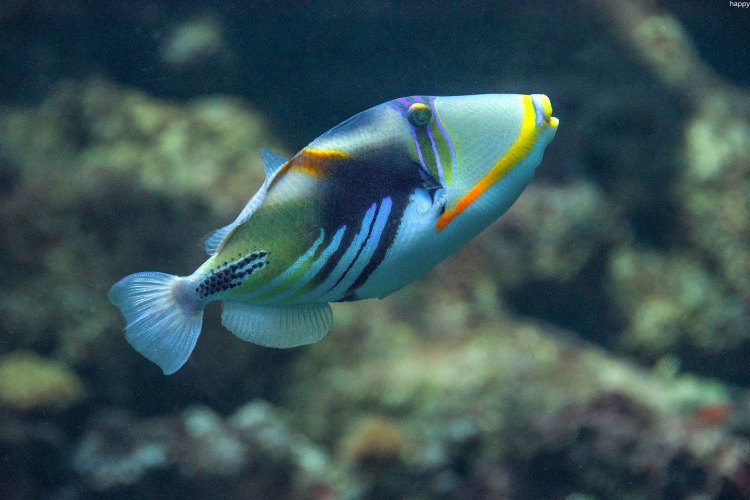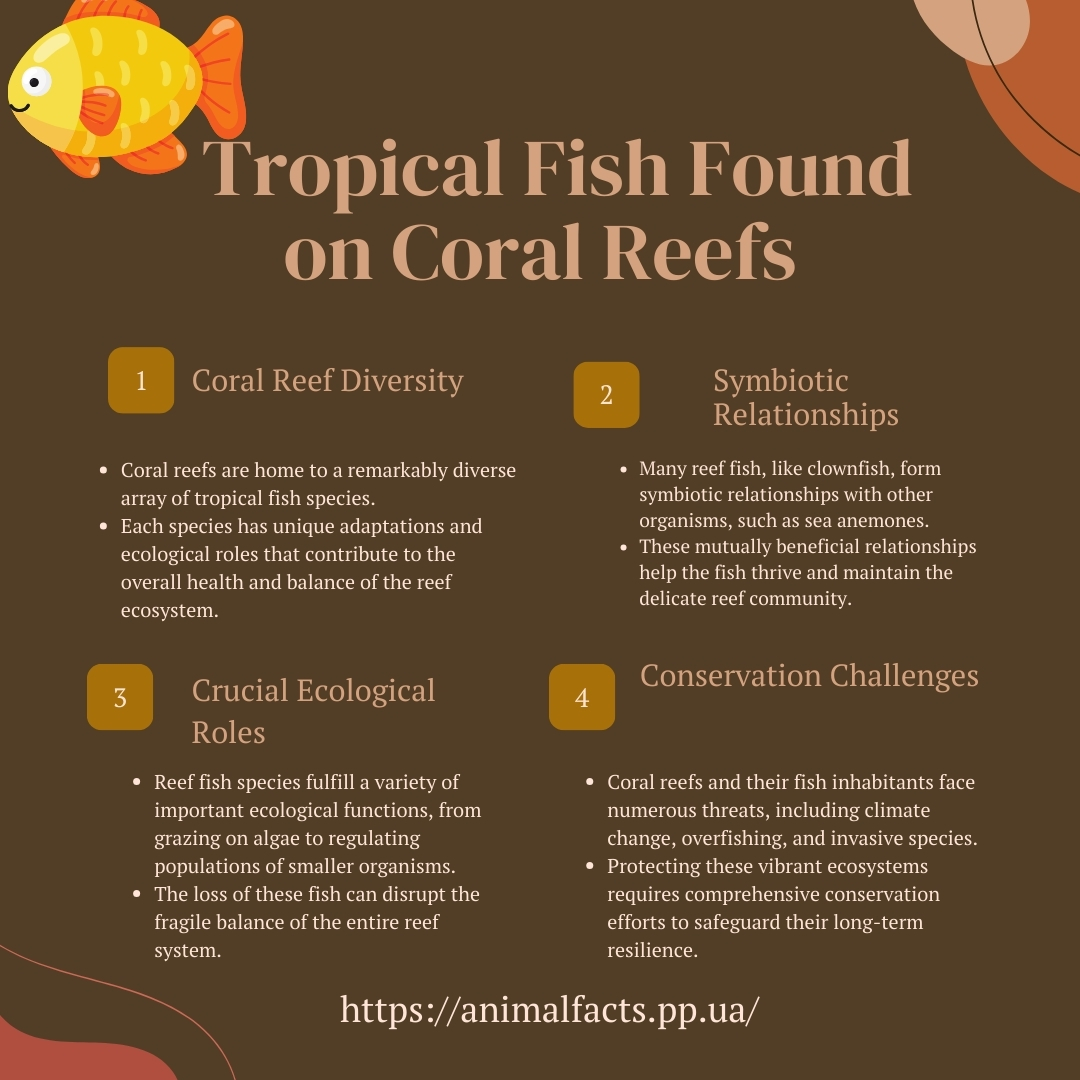Coral reefs are undoubtedly one of the most vibrant and diverse ecosystems on our planet.
These underwater oases teeming with life are home to a dazzling array of tropical fish species, each with their own unique features and adaptations.
From the iconic clownfish to the grazing parrotfish, these captivating creatures play vital roles in the delicate balance of the reef.
In this blog post, we’ll explore 15 of the most stunning tropical fish found on coral reefs, delving into their captivating appearances, fascinating behaviors, and the critical functions they serve within these fragile marine environments.
Key Takeaways
- Coral reefs are incredibly diverse ecosystems home to a wide array of vibrant and unique tropical fish species.
- The featured fish species play vital roles in maintaining the delicate balance and health of coral reef communities.
- Many of these fish have specialized features and behaviors that allow them to thrive in the complex reef environment, from the clownfish’s symbiotic relationship with sea anemones to the parrotfish’s coral-grazing abilities.
- Certain fish, like the lionfish, can become invasive threats to native reef ecosystems when introduced to new regions, highlighting the importance of conservation efforts.
- Understanding the ecological importance and captivating characteristics of these tropical reef fish can inspire greater appreciation and advocacy for protecting coral reefs worldwide.
- Maintaining the health and diversity of coral reef ecosystems is crucial, as they face numerous threats from climate change, overfishing, and other human impacts.
Types of Fishes Found on Coral Reefs
Coral reefs are home to a remarkable diversity of fish species, each with their own unique adaptations and ecological roles. Some of the most common and notable types of fish found in these vibrant underwater ecosystems include:
1. Clownfish (Amphiprioninae)
Features and Habitat:
- Distinctive orange, white, and black striped coloration
- Small, laterally compressed bodies well-suited for navigating reef crevices
- Form symbiotic relationships with sea anemones, using their stinging tentacles for protection
Behavior and Ecology:
- Live in small social groups, with a strict hierarchy led by a dominant breeding pair
- Fearlessly defend their anemone home from intruders, even larger predators
- Play a vital role in the anemone’s health by providing nutrients and oxygenation
The clownfish, also known as anemonefish, rose to global fame after being the star of the hit Pixar film “Finding Nemo.” These charismatic reef dwellers are known for their bright, eye-catching colors and their remarkable symbiotic relationship with sea anemones.
2. Parrotfish (Scaridae)
Features and Habitat:
- Distinctive beak-like mouths adapted for grazing on coral polyps and algae
- Variety of vibrant color patterns, including blues, greens, and pinks
- Primarily found on shallow, tropical coral reefs
Behavior and Ecology:
- Play a crucial role in reef-building and regeneration by consuming and excreting coral
- Graze on live coral, then digest the organic material and expel the calcium carbonate as sand
- Contribute to the formation and replenishment of the reef structure over time
Parrotfish are truly remarkable creatures, playing a vital role in the health and resilience of coral reef ecosystems.
Their unique beak-like mouths allow them to graze on the living coral polyps, which they then digest and excrete as sand, contributing to the ongoing formation and regeneration of the reef.
3. Angelfish (Pomacanthidae)
Features and Habitat:
- Distinctive disc-shaped bodies and “mask-like” facial markings
- Vibrant color patterns, often featuring bold stripes or intricate designs
- Found in a variety of reef environments, from shallow lagoons to deep drop-offs
Behavior and Ecology:
- Peaceful, yet territorial fish that establish and defend their own reef territories
- Omnivorous, feeding on a variety of algae, invertebrates, and small fishes
- Play a role in maintaining the balance of the reef ecosystem
Angelfish are truly captivating inhabitants of coral reef systems, with their striking disc-shaped bodies and intricate color patterns.
While generally peaceful, these fish are fiercely territorial and will defend their reef homes from intruders. Their diverse diet and ecological roles help to maintain the delicate balance of the reef community.
4. Butterflyfish (Chaetodontidae)
Features and Habitat:
- Laterally compressed, disc-shaped bodies for navigating tight reef spaces
- Distinctive color patterns, often featuring bold stripes or eye-like markings
- Found in a variety of reef environments, from shallow lagoons to deep drop-offs
Behavior and Ecology:
- Primarily feed on coral polyps, making them important grazers on the reef
- Form monogamous pairs and often swim and forage together
- Play a role in maintaining the balance of the reef ecosystem by controlling coral growth
Butterflyfish are truly captivating inhabitants of coral reef systems, with their striking disc-shaped bodies and intricate color patterns.
These specialized feeders play a crucial role in the reef ecosystem by grazing on coral polyps, helping to maintain the delicate balance of the reef community.
5. Wrasse (Labridae)
Features and Habitat:
- Elongated, torpedo-shaped bodies adapted for darting through reef crevices
- Highly variable coloration patterns, often changing dramatically throughout their lifespan
- Found in a wide range of reef habitats, from shallow lagoons to deep drop-offs
Behavior and Ecology:
- Serve various ecological roles, including as predators, cleaners, and prey
- Some species, such as the famous “cleaner wrasse,” remove parasites and dead tissue from other fish
- Play a vital role in maintaining the health and diversity of the reef community
Wrasse are a diverse and fascinating group of tropical fish found on coral reefs. With their elongated, torpedo-shaped bodies and highly variable coloration patterns, these fish are well-adapted to navigate the intricate reef environments.
From predatory species to specialized cleaners, wrasse play important roles in maintaining the delicate balance of the reef ecosystem.
6. Damselfish (Pomacentridae)
Features and Habitat:
- Small to medium-sized, often brightly colored fish
- Compact, laterally compressed bodies for swimming amongst coral
- Commonly found in shallow reef environments, often in social groups
Behavior and Ecology:
- Territorial and aggressive, defending their reef homes from intruders
- Herbivorous, feeding on algae and other plant matter
- Important prey species for larger predatory fish on the reef
Damselfish are a ubiquitous and ecologically essential component of coral reef ecosystems.
These small, brightly colored fish are known for their territorial and aggressive behavior, fiercely defending their reef homes from potential threats.
As herbivores, they play a vital role in controlling algal growth and maintaining the delicate balance of the reef community.
7. Surgeonfish (Acanthuridae)
Features and Habitat:
- Streamlined, laterally compressed bodies for maneuvering through reef environments
- Often feature distinctive scalpel-like spines near their tails, which can be used for defense
- Found in a variety of reef habitats, from shallow lagoons to deep drop-offs
Behavior and Ecology:
- Primarily herbivorous, feeding on algae and other plant material
- Travel in large, social schools, contributing to the vibrant, dynamic nature of the reef
- Play a crucial role in maintaining the health and balance of the reef ecosystem
Surgeonfish, also known as tangs, are a diverse group of tropical fish that are essential to the health and resilience of coral reef ecosystems.
With their streamlined bodies and scalpel-like tail spines, these fish are well-adapted to navigate the complex reef environments and defend themselves from potential threats.
As herbivores, they play a vital role in controlling algal growth and promoting the overall balance of the reef community.
8. Triggerfish (Balistidae)
Features and Habitat:
- Robust, laterally compressed bodies with distinctive “trigger” spines on their heads
- Varied coloration patterns, often featuring bold stripes or intricate designs
- Found in a range of reef habitats, from shallow lagoons to deep drop-offs
Behavior and Ecology:
- Territorial and known to be aggressive, especially when defending their nests
- Omnivorous, feeding on a variety of algae, invertebrates, and small fishes
- Play a role in maintaining the balance of the reef ecosystem by controlling population sizes of other species
Triggerfish are among the most distinctive and recognizable inhabitants of coral reef systems.
With their robust, laterally compressed bodies and unique “trigger” spines, these fish are well-equipped to navigate the complex reef environments and defend their territories from potential threats.
As both herbivores and predators, triggerfish play a vital role in maintaining the delicate balance of the reef community.
9. Lionfish (Pterois)
Features and Habitat:
- Distinct, venomous spines that protrude from their bodies for defense
- Striking, feathery fins and vibrant coloration patterns, often featuring bold stripes
- Found in a variety of reef environments, including shallow lagoons and deep drop-offs
Behavior and Ecology:
- Voracious predators, feeding on a wide range of smaller fish and invertebrates
- Native to the Indo-Pacific region, but have been introduced to other areas, becoming an invasive species
- Pose a significant threat to native reef ecosystems due to their lack of natural predators
Lionfish are one of the most captivating, yet problematic, inhabitants of coral reef systems.
With their striking feathery fins, vibrant coloration, and venomous spines, these predatory fish are well-adapted to thrive in reef environments.
However, their introduction to non-native regions, such as the Atlantic Ocean and Caribbean Sea, has had devastating effects on local reef ecosystems, as they have few natural predators to keep their populations in check.
10. Moorish Idol (Zanclus cornutus)
Features and Habitat:
- Distinctive, laterally compressed body shape with a protruding, beak-like snout
- Striking black, white, and yellow color pattern, often with a prominent dorsal fin
- Typically found in deeper reef environments, often near drop-offs and caves
Behavior and Ecology:
- Solitary or found in small groups, often foraging for algae and small invertebrates
- Known for their unique swimming patterns, with an almost hypnotic, swaying motion
- Considered one of the most iconic and recognizable reef fish species
The Moorish idol is a truly captivating and iconic inhabitant of coral reef ecosystems.
With its distinctive body shape, striking coloration, and unique swimming behavior, this fish has captured the imagination of marine enthusiasts and underwater photographers alike.
While not as prevalent as some other reef fish species, the Moorish idol is a testament to the incredible diversity and beauty of these fragile marine environments.
Conclusion
Coral reef ecosystems are undoubtedly among the most vibrant and diverse habitats on our planet, home to a dazzling array of tropical fish species.
From the iconic clownfish to the unique Moorish idol, each of these captivating creatures plays a vital role in maintaining the delicate balance of the reef community.
As we continue to face the devastating impacts of climate change, overfishing, and other threats to these fragile marine environments, it is more important than ever to prioritize the conservation and protection of coral reefs and the incredible biodiversity they support.
By learning about and appreciating the remarkable features and ecological functions of these tropical fish, we can become more informed advocates for the preservation of these irreplaceable ecosystems.

